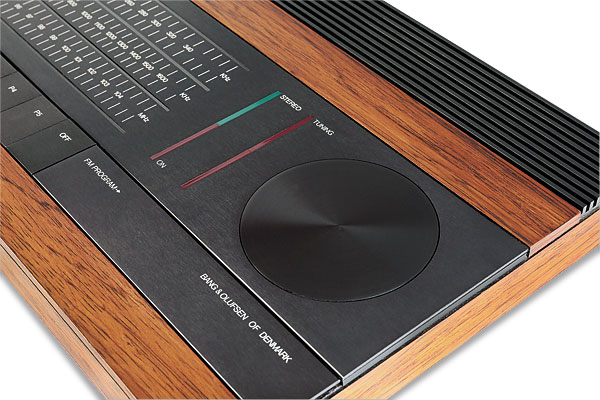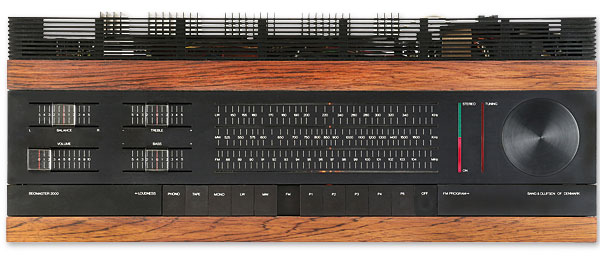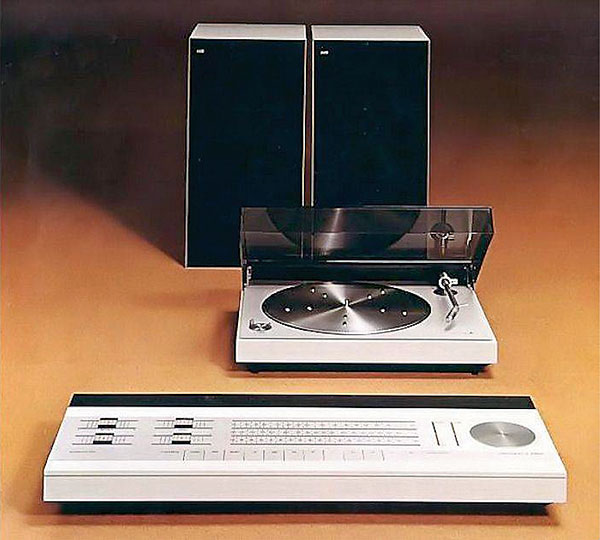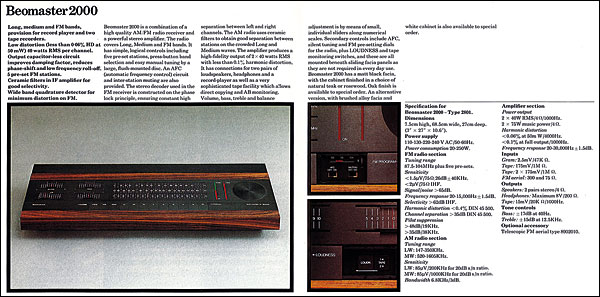B&O Beomaster 2000

 With the Danish company in the doldrums come the early '70s could this reimagined receiver with phase-locked loop decoder deliver on its promise of 'high fidelity' sound?
With the Danish company in the doldrums come the early '70s could this reimagined receiver with phase-locked loop decoder deliver on its promise of 'high fidelity' sound?
Bang & Olufsen's first move into the world of serious hi-fi came in 1967 with the introduction of the Beolab 5000 amplifier and Beomaster 5000 tuner [HFN Dec '12]. These defined the European state of the art at the time and were as successful as their high prices allowed. The company then distilled these two units into the Beomaster 3000, which offered similar qualities at a more accessible price. It lacked the sheer power and versatility of the Beolab 5000 but sold strongly throughout a long production run.
These products created a new sector in the company's range – 'high fidelity'. The models were aimed at the serious listener and offered high power output, advanced facilities and what the designers considered to be the best possible sound.
Wide Ranging
This 'high fidelity' line got off to a good start but floundered in 1973 when the Beomaster 4000 was introduced. This was intended as a Beolab replacement and was based on a modified 3000 chassis, uprated to produce 2x60W. Yet its sound was lifeless and unexciting. The 6000 4channel receiver [HFN Sep '21] was not as dynamic as it could have been either, suggesting that something had gone seriously amiss in the design of B&O's range-topping models.

It was against this backdrop that the Beomaster 2000 reviewed here appeared. Launched in late 1975 and new from the ground up, it saw designer Jacob Jensen's beloved 'low and wide' look introduced to the serious end of the range. And there were plenty of novel technical ideas inside too. B&O's circuitry typically evolved slowly across inter-related models but most of the 2000 had not been seen before. For example, the AM radio section was B&O's first IC-based design and included a ceramic filter to give precise tuning. The FM section also made extensive use of ICs and included five pre-set stations and a sophisticated active AFC system, which ensured permanently accurate tuning.
The key innovation, however, was the phase-locked loop stereo decoder – B&O's first. Even the more expensive models in the range still used the older regenerative type, so in terms of radio performance the 2000 was a big step ahead. Yet while impressive, none of these features were what made the Beomaster 2000 special.
Low Rider
The really important change was that it was B&O's first amplifier to use DC coupling between the output transistors and speaker load. Dispensing with the transformers or capacitors that previously sat between these two elements meant the amplifier's output impedance could be reduced [see PM's Lab Report, p125] and substantially constant in respect to frequency. This, in turn, paid dividends in terms of the damping factor that could be achieved at the speaker interface and the quality of bass that could be reproduced.
Capacitor Crusade
DC-coupled amplifiers had been made possible by the introduction of matched pairs of complementary power transistors in the early 1970s. B&O was not to be rushed into producing a DC-coupled design but the 2000 proved to be thoughtfully engineered and rugged when it did eventually appear. The output transistors chosen were high-gain Darlington types, a class of component B&O had extensive experience of given their widespread use in a previous series of lower-powered, AC-coupled models.

This was not the end of the story, however. Having eliminated the large aluminium electrolytic capacitors in series with the loudspeaker outputs the designers then systematically eliminated them from everywhere else in the design where it was practical. In the end, only six remained, which were necessary for power supply filtering where no other capacitor technology could yield the values needed. What's more, all the capacitors in the signal path were either tantalum or film types. While a familiar enough performance amplifier technique today, it was a largely unexplored idea in domestic hi-fi in the mid 1970s.
The styling had moved on since the days of the Beomaster 1200 whose tuning control looked like a giant slide rule. The 2000 used a larger version of the flush-mounted flywheel first seen in the 6000 4channel. The temptation to use electronic signal routing was resisted with function selection being performed by oversized push buttons. These too were flush with the fascia when not in use.
Most Beomaster 2000s were finished in matt black anodised alloy with either teak or rosewood veneered cabinetwork, but limited numbers were produced with silver alloy over white. These are highly prized by collectors today. All B&O equipment from the 1970s is stylish, but the Beomaster 2000 takes this to the next level. Despite its mechanical controls it hasn't dated as much as some other B&O models – house guests who clapped eyes on it during my auditioning assumed it was less than ten years old.


Flushed With Success
The Beomaster 2000 is also a delight to use – B&O described the push buttons as 'super smooth' and they truly are. The flush tuning flywheel is nicely weighted while the tuning balance and stereo indicator lamps associated with it don't so much flicker as flow, as if they are operated by some ingenious arrangement of viscous fluid. Five pre-set stations are provided on FM, their setting made by a group of tiny scales under a sliding cover on the right of the unit. A similar cover on the left gives access to a tape 1/2 switch and a loudness button (which is best left switched off).
Compared to the other controls, the sliders for the amplifier are a bit stiff and jerky in use. Connections are provided for a turntable and two tape recorders, a pair of headphones and two pairs of loudspeakers. The turntable input is matched to B&O's own moving-iron pick-ups but these are similar enough to modern MM types for there not to be compatibility problems.
Having two tape sockets gives a useful place to connect a CD player, but this is best placed in 'Tape 1' and the recorder in 'Tape 2' otherwise CD-to-tape transfers cannot be made. The loudspeaker sockets are arranged so that one pair is muted when the headphones are connected and the other pair is not. The direct (speakers 2) is the best choice for critical listening, but less convenient in a domestic setting.


















































